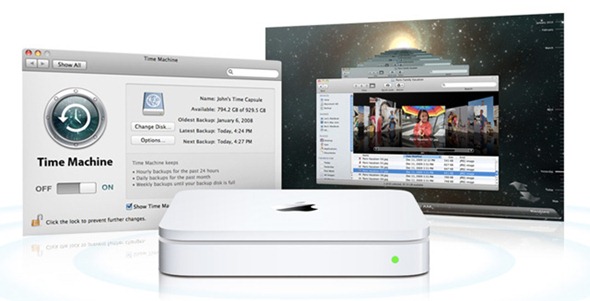If the speculation is to be believed, then Apple has plans in place to adopt and support the new 802.11ac specification across Airport base stations, Time Capsules, Apple TV, Notebooks and potentially the company’s range of mobile devices.

The 802.11ac standard provides high throughput WLAN in the 5GHz band and provides theoretical speeds of at least 1 gigabit per second; with the standard looking likely to achieve worldwide adoption by 2015. As a company, Apple is obviously well known for being amongst the first to adopt new technologies and make them a commonplace, so a 2012 rollout of this standard seems highly likely to follow the trend.
The current range of Macs, AirPort and iOS devices all use the 802.11n specification, but the move to ‘ac’ would allow the devices to achieve much higher wireless networking speeds by coupling together frequency bandwidths with support for up to eight antennas. The 802.11 working group are yet to make the move to classify the 802.11ac as an official standard, but the progress is moving along a lot faster than previous efforts in the industry, making it likely that large companies will start to adopt it sooner rather than later.
The Consumer Electronics Show earlier this month also showcased companies demonstrating the new 802.11ac standard in operation with a demonstration of fifth generation Wi-Fi. Broadcomm, who are one of the key players in making Apple components, turned up at CES with the launch of the world’s first 802.11ac chip, which promised to be the fastest, most reliable coverage for HD video and near instantaneous data syncing.
With the final specification set to be announced at some point in 2012, Broadcomm have already announced a whole family of chips which are built upon this ‘ac’ specification. A snippet of their press release from the Las Vegas-based convention goes some way to explain the benefits:
5G WiFi is the next generation Wi-Fi standard required for today’s mobile and video era. Based on 802.11ac, 5G WiFi is a major evolutionary step from the existing 802.11a/b/g/n networks. Broadcom’s 5G WiFi dramatically improves the wireless range in the home, allowing consumers to watch HD-quality video from more devices, in more places, simultaneously.
A number of analysts have predicted that although the IEEE 802.11ac – to give it its formal name – is all set to be the next generation of Wi-Fi, they believe is it unlikely that the aforementioned technology will go mainstream in mobile devices before 2014. With mobile devices naturally being a lot smaller-than-desktop machines and routers, the footprint of a 802.11ac chip may currently just be too big to incorporate into these devices, and then the cost also needs to be taken into consideration.

Whatever Apple’s chosen path is, history gives us some insight into their thinking and we should be welcoming ‘Gigabit Wi-Fi’ to a revamped range of machines sometime this year.
(via MacRumors)
You may also like to check out:
- Chinese Case Maker Outs Alleged iPad ’2S’ Case, Slightly Thicker Than Its Current Generation Counterpart [IMAGES]
- Next iPhone Will Have A Thinner Profile Than The iPhone 4S With Support For All 3G and 4G LTE Networks [REPORT]
You can follow us on Twitter, add us to your circle on Google+ or like our Facebook page to keep yourself updated on all the latest from Microsoft, Google, Apple and the web.

